基于FAPbBr3的稳定钙钛矿发光器件毕业论文
2020-07-07 22:15:55
摘 要
有机-无机杂化钙钛矿是目前非常火热的研究领域,这一材料可以在低温下通过溶液加工制备得到具有直接带隙的半导体晶体薄膜。同时,作为一种半导体材料,其优异的光电性能,如高迁移率,高光致发光量子效率,高色纯度和发光波长以及从可见光到近红外光谱可调,使其成为下一代照明和显示领域的理想材料。然而,钙钛矿发光器件(LED)依然存在着许多问题。首当其冲的就是稳定性,钙钛矿材料的光稳定性,热稳定性和环境稳定性限制了钙钛矿的实际应用,因此,如何解决这一问题成为研究者们关注的焦点。
界面工程作为一种有效提高发光器件性能的手段,在提高钙钛矿材料的薄膜性质和器件性能方面有着巨大的作用。本课题通过这种方法,使用碳酸铯(Cs2CO3)代替聚乙烯亚胺(PEIE)修饰电子传输层氧化锌,并改变浓度分析其对器件各方面性能的影响,最终发现使用碳酸铯作为修饰层,可以有效提高钙钛矿薄膜的晶体质量,进而提升器件性能和稳定性,使器件在10 mA cm-2的电流密度下可以持续工作超过20分钟,相比于对比器件有着量级上的提升。
关键词:钙钛矿 电致发光器件 界面工程 碳酸铯(Cs2CO3) 稳定性
Abstract
Organic-inorganic hybrid perovskite materials have drawn significant interest in the past few years. This material can be prepared by solution processing at a low temperature to obtain a direct band gap semiconductor film. Besides, this material has superior optoelectronic properties, such as high carrier mobility, high color purity, precise and facile tunable luminous wavelength from visible to near-infrared spectrum, and high photoluminescence quantum yield. These properties render perovskites suitable for next-generation high-definition display and lighting systems. However, the stability of the perovskite LEDs are very limited. Its poor photostability, thermal stability, and ambient stability limit their practical application, which has also attracted much attention of many scientists and researchers.
As an effective approach to improve the performance of the perovskite LEDs, Interface treatment methods play an important role in improving the film quality and the performance of devices. In this experiment, we replace the polyethyleneimine (PEIE) interlayer between the oxide electrontransporting layer and the perovskite emissive layer with cesium carbonate interlayer and change the concentration of the cesium carbonate in order to study its effect on the devices. It was demonstrated that cesium carbonate interlayer can improve the crystal quality of perovskite film, which has greatly improved the stability and performance of the PeLEDs. Finally, the device can operate continuously for more than 20 minutes at a current density of 10 mA cm-2, which is an order of magnitude improvement.
Key Words: perovskite; electroluminescent device; interface treatment methods; cesium carbonate; stability
目录
摘 要 I
Abstract II
第一章 绪论 2
1.1钙钛矿材料 2
1.2钙钛矿发光器件(PeLEDs) 2
1.2.1工作原理 2
1.2.2参数指标 2
1.2.3研究进展 2
1.3界面调控 2
1.3.1界面调控方法 2
1.3.2 PEIE中间层 2
1.4本论文设计思路 2
第二章 实验部分 2
2.1药品与仪器 2
2.2器件制备 2
2.3薄膜表征和器件测试 2
第三章 分析与讨论 2
3.1钙钛矿晶体结构表征分析 2
3.2钙钛矿薄膜形貌表征分析 2
3.3钙钛矿薄膜光学特性表征分析 2
3.4发光器件的表征分析 2
第四章 结论与展望 2
4.1结论 2
4.2展望 2
参考文献 2
致谢 2
第一章 绪论
1.1钙钛矿材料
2016年12月,《自然》杂志发布了一篇名为《2017 sneak peek: What the new year holds for science》(2017值得期待的科学事件)的文章,其中将钙钛矿这种新兴材料称之为奇迹材料。钙钛矿最早是由德国的矿物学家Gustav Rose发现,并以他心中伟大的地质矿物学家Lev Aleksevich von Perovski的名字命名[1-2]。这种矿物在地球普遍存在,已知存在的种类就有数百种之多。有机-无机杂化钙钛矿材料可以通过低温溶液加工,这一特性使其具有廉价易加工的优势。钙钛矿材料可以充分溶解于N,N-二甲基甲酰胺、二甲基亚砜和γ-丁内酯这些溶剂中,再通过简单的旋涂、退火操作就可以自发结晶形成晶体薄膜。钙钛矿薄膜具有低缺陷密度、双极子传输性能优异,同时兼具宽光谱吸收和长载流子扩散距离等特性,是太阳能电池的理想材料[3-7]。此外,作为直接带隙的半导体材料[8-9]。钙钛矿材料具有优异的光电特性,如高光致发光量子效率、高色纯度和发光波长从可见光到近红外范围可调,这些性质使有机—无机杂化钙钛矿材料在发光领域也具有广阔的前景[10-15]。
三维钙钛矿具有通式为ABX3的立方型晶体结构,其中A位是有机阳离子,B位是二价金属阳离子,X位一般为碘溴氯类的卤素基团(图1-1),而大多数文献研究的钙钛矿材料也都是三维钙钛矿结构。三维钙钛矿成膜性较差,而二维钙钛矿通常具有良好的成膜性能[16]。二维钙钛矿PeLEDs由于材料中的激子在室温下发生了严重的淬灭,所以不能在室温下正常工作[19,20]。近两年二维三维混合钙钛矿材料引起人们的关注,其兼具了二维钙钛矿和三维钙钛矿材料的优势,通式为L2(SMX3)n-1MX4,其中M,X,L和S分别为二价金属阳离子,卤化物和有机长链、短链阳离子(图1-2)[16-18]。这里n是两个有机层(阳离子L)内半导体MX4单层片的数量,其中n=∞对应于三维钙钛矿SMX3的结构,而当n=1时,单层的钙钛矿形成二维钙钛矿L2MX4的结构。我们可以通过调节有机阳离子和无机卤化物的相对含量,来得到不同层数n的钙钛矿结构。
相关图片展示:
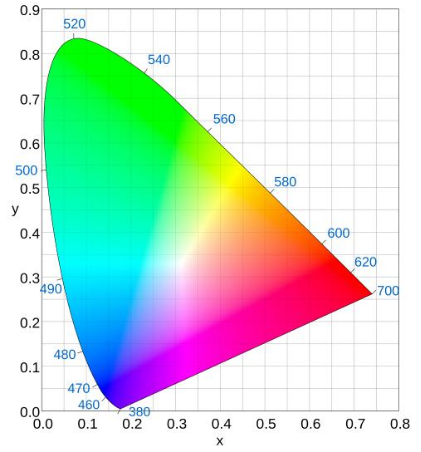
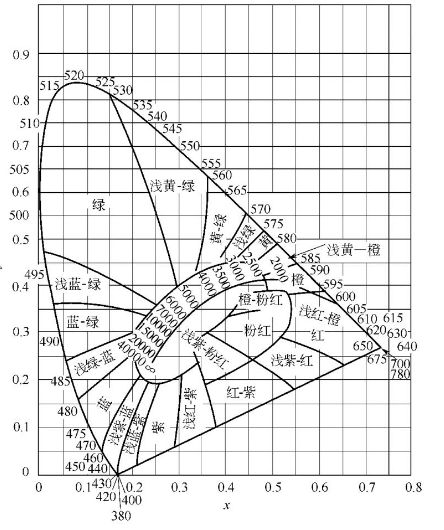
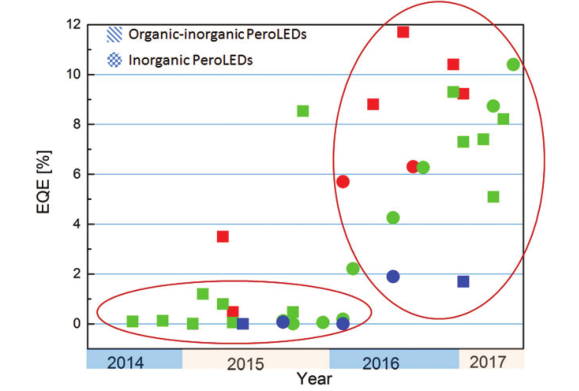
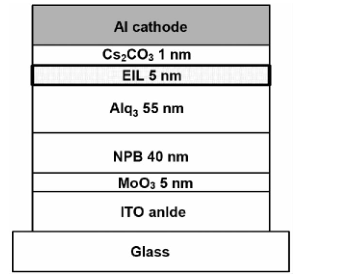
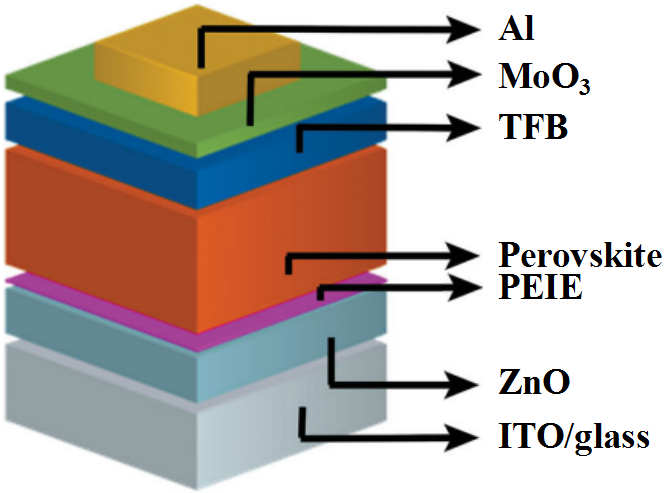
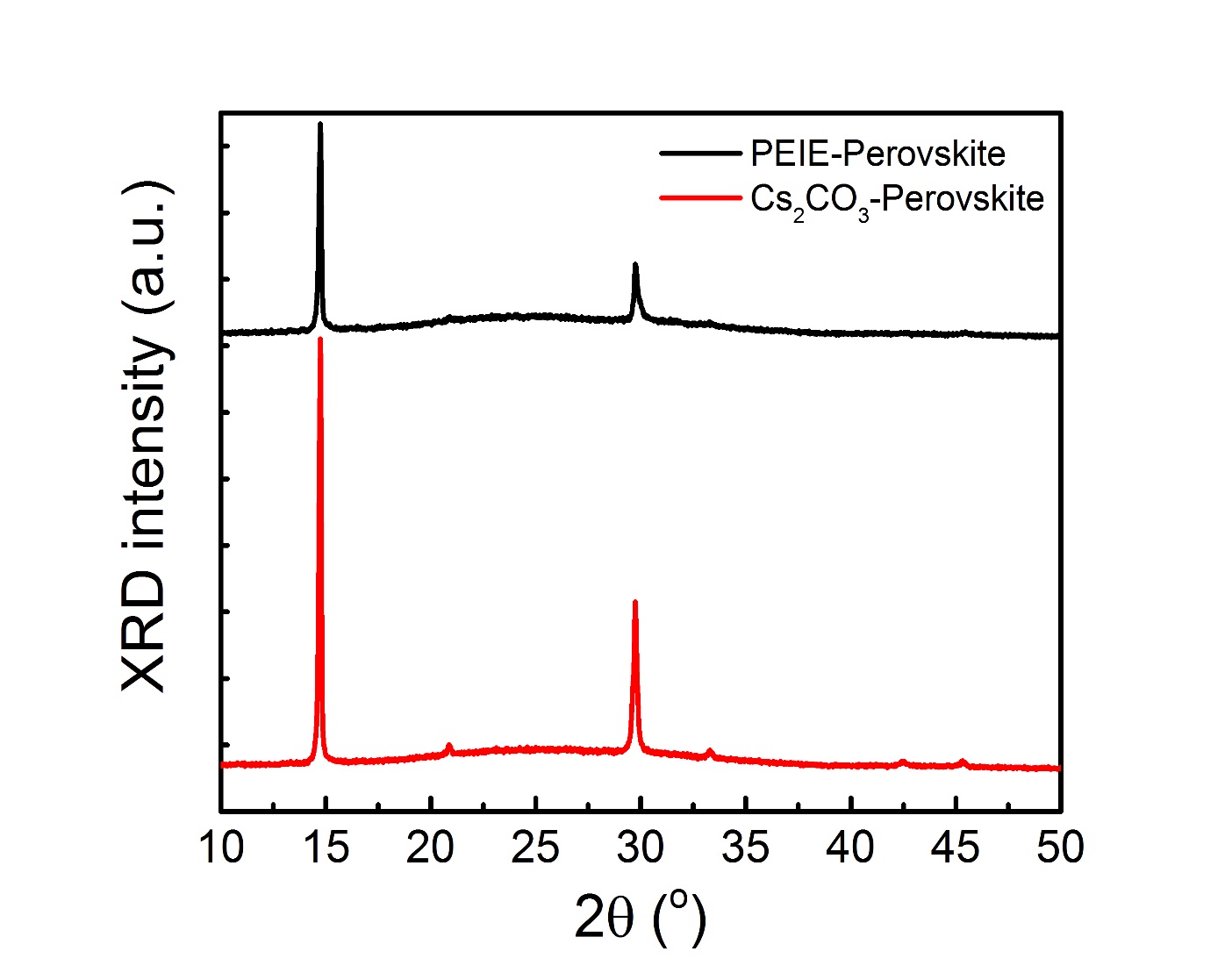
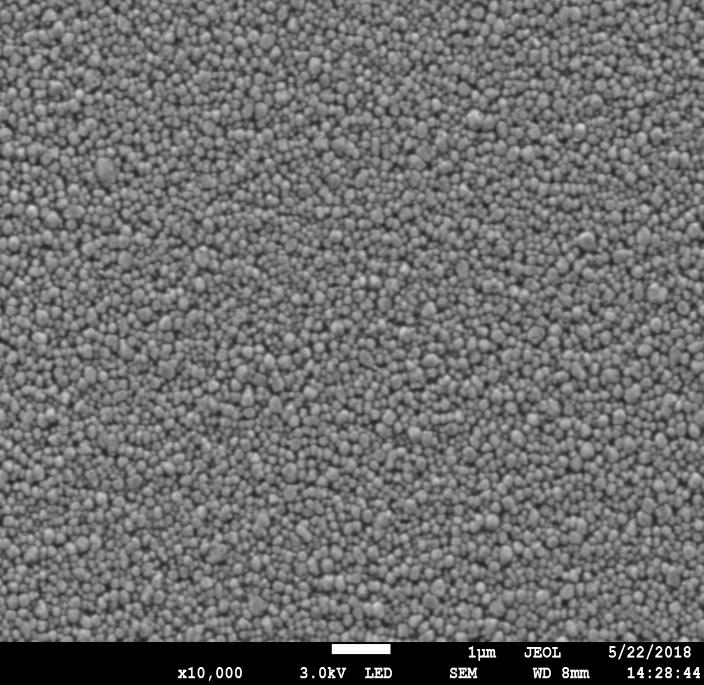
课题毕业论文、开题报告、任务书、外文翻译、程序设计、图纸设计等资料可联系客服协助查找。



